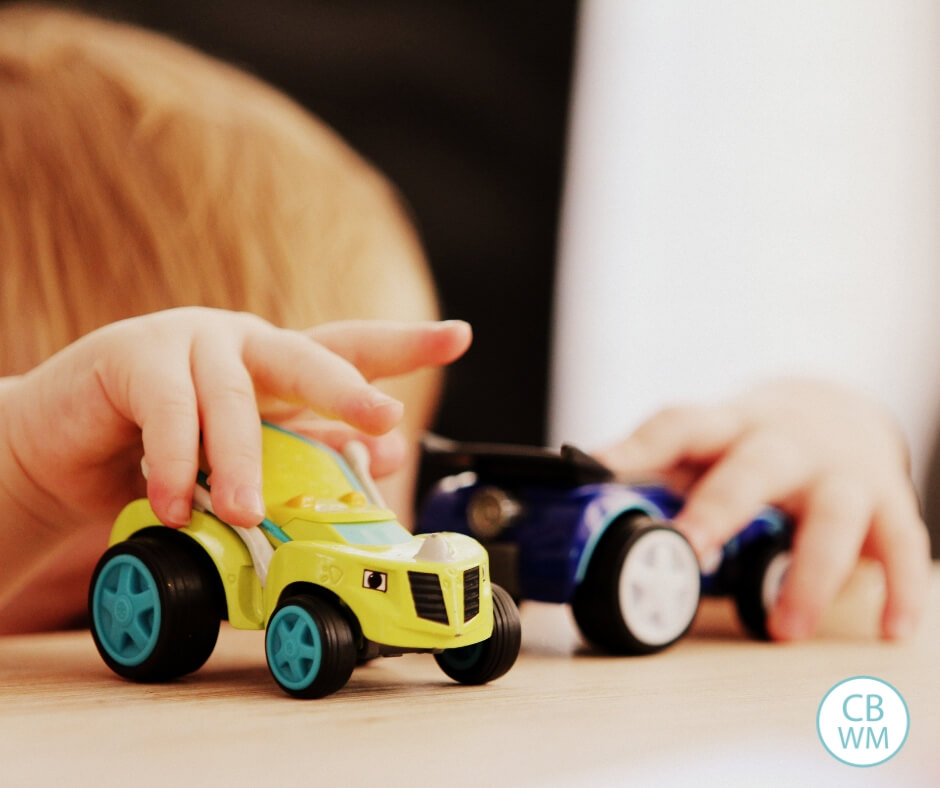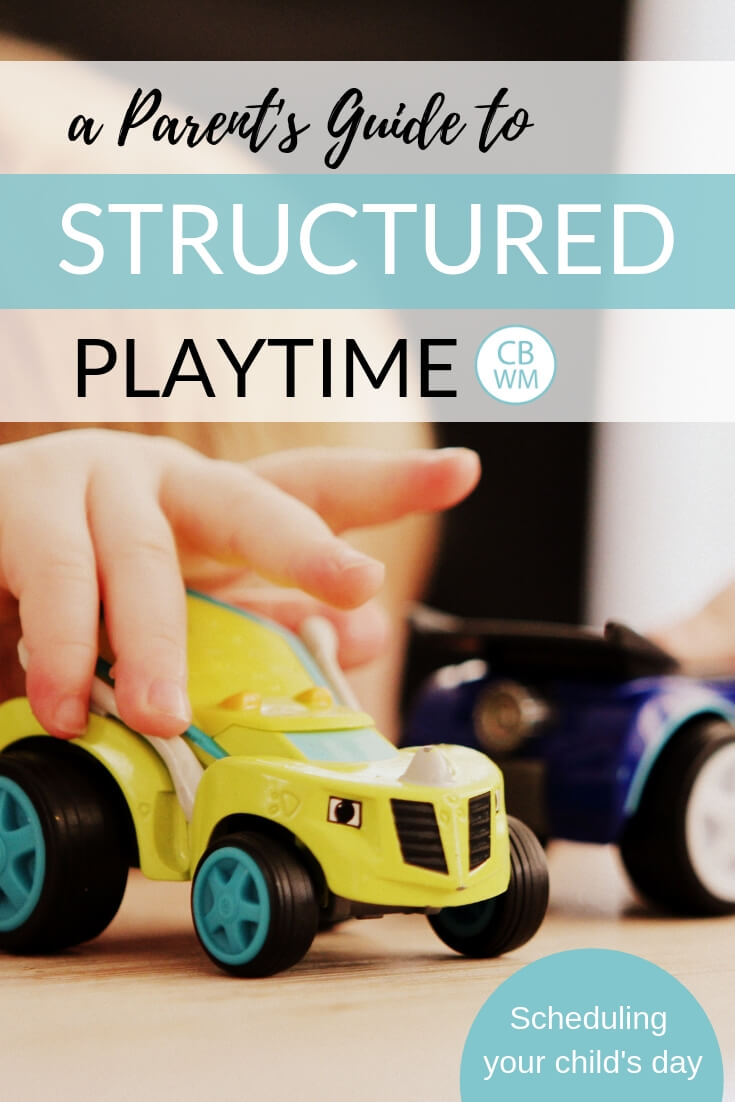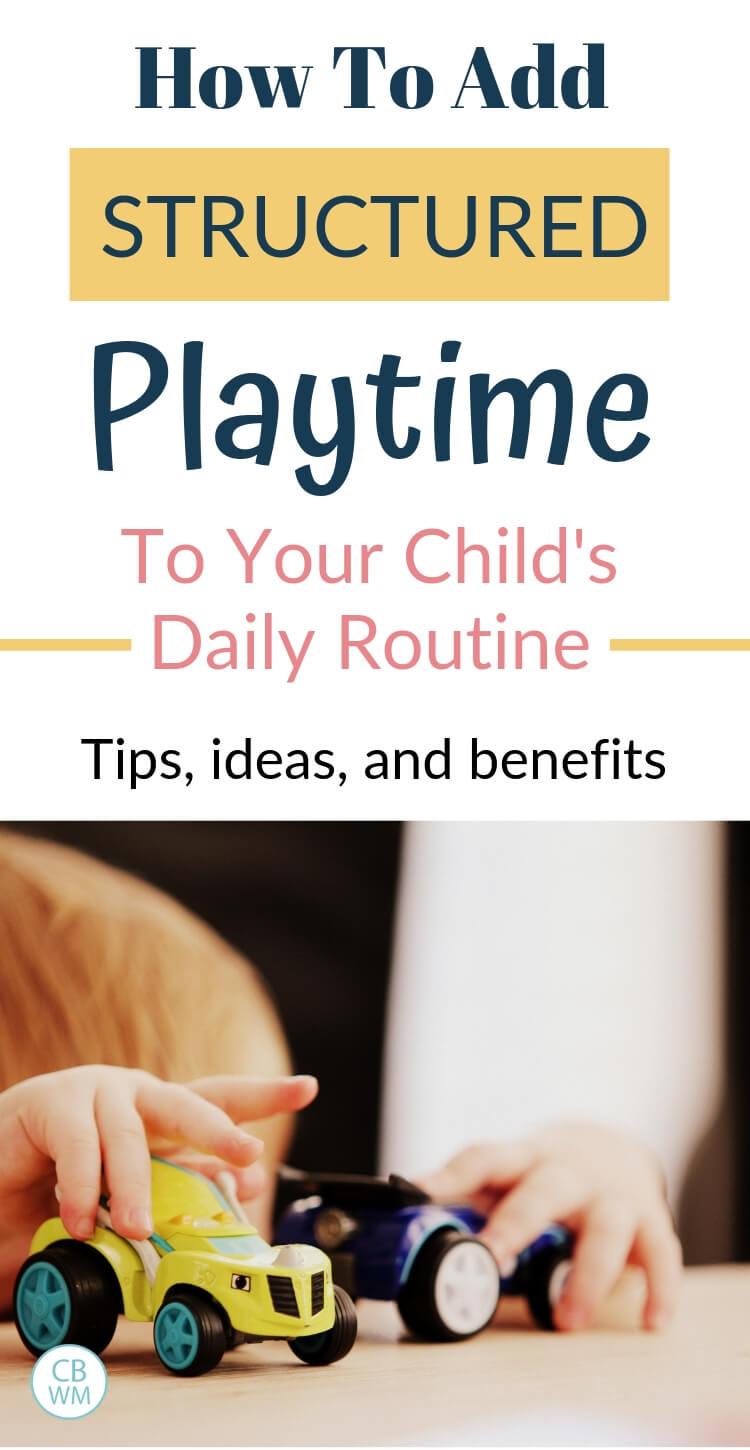Understanding what structured playtime is and when to plan those structured playtime activities into your child’s day each day.

As you plan out your daily schedule or routine with your child or children, one of the elements you want to include each day is structured playtime.
If you take a step back, you break your day up into three simple parts. Eat, wake, and sleep. This is basic.
The eat and wake times are straightforward. They aren’t always easy to get through, but you know exactly what should happen in those times.
The wake is the time slot that has endless options. There are many facets to your day. You need time to get ready, brush teeth, etc. You might have time spent with scriptures and prayer. You might have some television or technology time. You will want to have some free playtime.
You also want structured playtime.
Post Contents
Structured Playtime Defined
Structured playtime can be done alone, with a sibling, or even with the family. The number of people involved does not determine if it is structured or not.
Structured playtime is when the parent chooses what the activity is and what time it happens (read about that in On Becoming Toddlerwise on page 49). The parent also chooses where the activity happens. There will be rules and boundaries associated with the activity. The parent will also decide when the activity will end.
Structured playtime is an activity that requires some concentration and focus. It will also likely require some patience and self-control.
Structured Playtime Benefits
There are many benefits to having time in your day that is structured each day. It teaches your little one that he or she can’t always choose the activity done or the boundaries surrounding that activity. This is a life skill. We are often required to do things we don’t want to do for a longer length of time than makes us happy.
Children need to be able to deal with that reality as young as preschool, or even church nursery.
Structured playtime improves focusing skills and patience. It requires a child to learn how to entertain him or her self. This time helps children to make the most out of what they have been instructed to do.

Examples of Structured Playtime
There are many activities you can add to your day that are considered structured playtime.
Independent Playtime or Roomtime
My favorite structured playtime activity is Independent Playtime. You can read all about the Benefits of Independent Play here.
Independent playtime is a time when your baby, toddler, preschooler, or child plays alone for a set amount of time. The child is alone where he or she cannot see or interact with anyone else. This is my very favorite structured playtime activity, so if you only have space for one structured playtime in your day, choose this one.
The length can start as short as five minutes and can extend to 60-90 minutes, depending on your child. This is typically best done sometime in the morning hours before lunch, especially if your child takes one nap a day.
Get started with my post How To Get Your Child to Happily Play Alone. As your child gets older, it moves to a Roomtime instead.
Blanket Time
The next structured playtime activity to consider is Blanket Time. Many people tend to either do blanket time or independent playtime. You can do both!
Blanket time is done with mom or dad right there. The child plays independently, but not in a room all alone. This is super helpful because this blanket time can easily transfer to church, doctors office visits, and helping in class at school.
Blanket time can be super handy to do in your daily routine when you are making dinner or helping older children with homework or homeschooling. Many parents tend to do this more in the afternoon or evening, but there is no right or wrong time of day.
Read all about blanket time in my Blanket Time Full Guide post:
Sibling Playtime
Sibling playtime is very similar to Independent Playtime except that it happens with siblings. You will want to wait until you have two children old enough to play with each other without mom or dad being right there before starting this. You can have as many siblings participate as you have available.
Sibling playtime happens in a place where the kids can’t see mom and dad. I like to keep an ear on them so I can step in if things get out of hand. However, I do like the kids to learn to solve conflicts without an adult stepping in. So I listen so I can step in if needed, but I do not step in every time there is a squabble.
A huge perk of this is your kids learn to be friends and be content with the company of each other. It isn’t reasonable that a parent plays with the kids all day. This activity is great for helping kids learn to play without an adult playing with them.
I like sibling playtime in the morning hours. This is when kids are less tired, hungry, and cranky. They have better luck and being kind and patient with each other. Read all about Structured Playtime with Siblings here.
Table Time
Table time is done at the kitchen table or counter if you have an island or breakfast bar situation going on. You give your child some things to do and require your child to do those without being entertained and without interrupting you. This might be a puzzle, a coloring book, play-doh, etc.
Table time is another great tool for homeschoolers or moms needing to help older children with something. You might have one child do table time while you help another practice the piano. It is another great tool for while you make dinner.
Learning Activity Time
Learning activity time is more interactive than a lot of structured playtime activities. This can be done anywhere you need for the learning activities you have planned. You might be in the kitchen, in the garden, on a walk, etc. You plan the learning activities and you do them together with your child or children. You can read my tips for How to Do a Preschool Homeschool for tips on this.
This can be done any time of day. We have always tended to have it after lunch and before afternoon naps.
Learning time is the other structured activity I have always tried to have every day no matter what.
Adding Structured Playtime to Your Daily Schedule
You can do all of these in a day or just one. You can do one every day and add others in as needed each day. You might have independent playtime each morning and then do a structured playtime slot each early evening after the afternoon nap and just rotate through these other ideas as you desire and need that day.
If you would like to try to have all of these each day, be sure you schedule your top priority structured playtime activities in time slots you know you can be consistent with. Put others that are lower priority in time slots that tend to get interrupted for whatever reason from time to time.
Morning: Independent Playtime or Roomtime, Sibling Playtime
After Lunch: Learning Activity Time
Evening: Blanket Time and/or Table Time
Conclusion
As you plan out your day, be sure to include some structured playtime in your child’s daily schedule or routine. Be sure to also have some free play and include plenty of time for your eating and sleeping activities.

